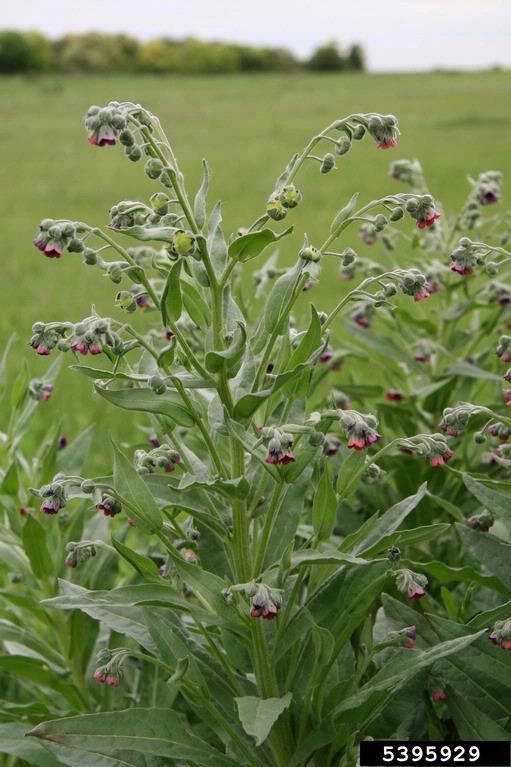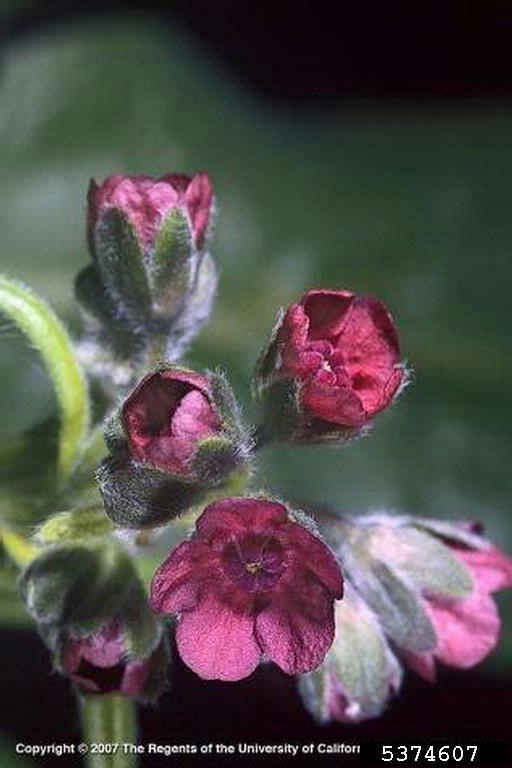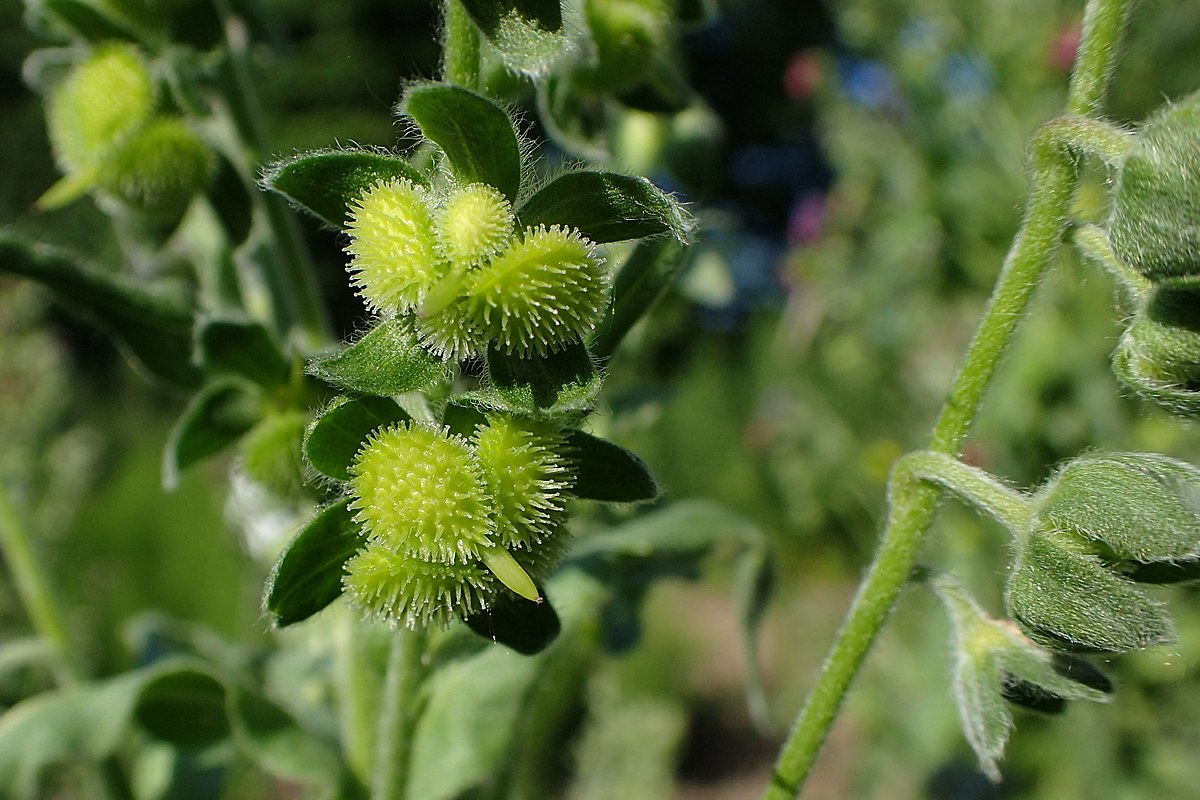Hound's Tongue

Hound's Tongue
(Cynoglossum officinale)
Priority: - Eradicate
Tags: Terrestrial | Toxic
Identification and Reproduction
Identification:
- Hound's tongue grows up to 1.5 m tall from a woody taproot.
- Stems are rough in texture and branched in the upper portion.
- Its leaves have prominent veins, smooth edges and can reach lengths of 30 cm. On bolting plants the leaves become broader at the tips and taper to the stem, appearing like a hound's tongue.
- Flowers bloom from long coiled stalks through May to July. It produces red to purple flowers that are composed of 5 petals.
- All parts of the plant are covered in long soft hairs.
Reproduction:
- Seeds that are left above ground or even on the plant can remain viable for up to 3 years, seeds that are buried will last viable for year.
- Seeds are barbed and can easily stick to clothing, fur, tools and other materials.
Habitat & Ecology
- Prefers dry and well-draining sites.
- It is a weak competitor and requires disturbance to establish.
- It thrives in forest sites and recently logged forest openings.
- It is shade-tolerant.
Impacts
Social:
- This plant is often a contaminant in cereal seed.
- This plant is toxic and will cause irreversible liver damage to a number of animals: cattle, deer, pigs, horses and goats.
- Bur-like seeds can even impact animal eyesight if they attach or embed themselves around the eye area.
- Bur-like seeds also strongly cling to fur and clothing and can impact recreational activities.
Management
- Maintaining healthy rangeland will help and prevent hound's tongue from establishing.
- If seeds are found attached to clothing or pets, be sure to dispose of them in the garbage or break them in half so they are no longer viable.
- Clean clothing, pets, equipment and vehicles of bur-like seeds prior to leaving an infested site.
Mechanical/Manual Control:
- Regular cultivation is successful for cropland infestations.
- Hand-pulling is effective for smaller patches that are found in soft and moist soils.
- Cutting the plants below ground level will help prevent resprouting.
- Mowing will only be effective prior to flowering.
- Removed plants should not be composted, collect and bag and dispose or burn.
- Reseed or revegetate the area after removing plants.
Biological Control:
- There has been trials in BC and Alberta for two insects that consume the foliage.
Resources
King County has some excellent resources on Hounds tongue identification and management. Note this is a resource from the US and Canadian guidelines and regulations may differ. Be sure to follow chemical labels.
Check out this video by the Ravalli County Weed District RCWD to help identify Houndstongue.
Header photo (Matt Lavin).





